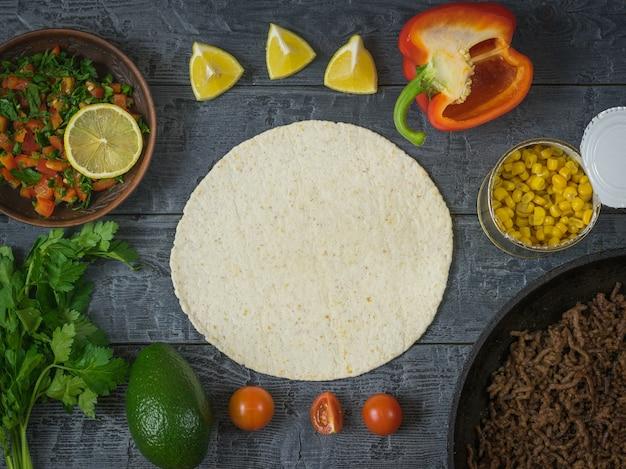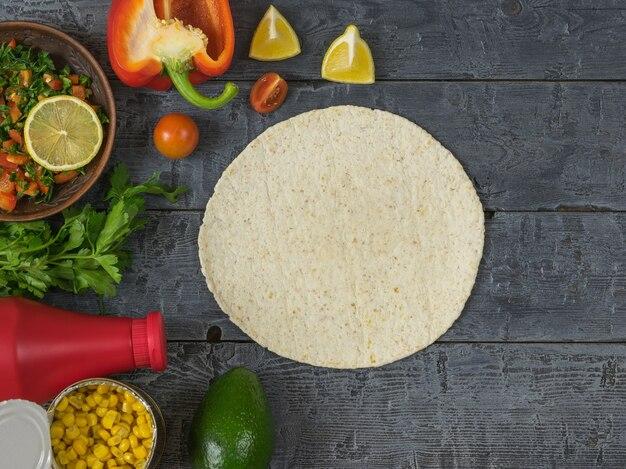Corn is a staple ingredient in many traditional Mexican dishes, and its versatility knows no bounds. But have you ever wondered why corn flour is sometimes treated with lime? Enter the fascinating world of nixtamalization – an ancient culinary technique that has been practiced for centuries. In this blog post, we will delve into the secrets of limed corn flour and explore the reasons behind this traditional process that has shaped the flavors and textures of Mexican cuisine over generations.
Nixtamalization involves soaking corn kernels in an alkaline solution made with lime (calcium hydroxide) and water. This process alters the molecular structure of the corn, making it easier to grind and increasing its nutritional value. The resulting corn masa, or dough, is the foundation for iconic Mexican dishes such as tortillas, tamales, and sopes. So, if you’re a foodie looking to elevate your culinary game or simply curious about the magic behind traditional Mexican cooking, keep reading to discover the intriguing world of limed corn flour.
What Is Limed Corn Flour
The Basics of Limed Corn Flour
Let’s dive into the wonderful world of limed corn flour! This miraculous ingredient has been a staple in many kitchens for centuries, but what exactly is it? Limed corn flour, also known as masa harina, is a type of flour made from dried corn kernels that have undergone a process called nixtamalization.
Nixtamalization: A Fancy Word for a Fascinating Process
Now, don’t let the intimidating word “nixtamalization” scare you away. It’s simply a traditional method of treating corn with an alkaline solution, typically made from slaked lime or ash. This process, which dates back to ancient Mesoamerican civilizations, has several benefits. Not only does it enhance the flavor and texture of the corn, but it also boosts its nutritional value by increasing the availability of essential amino acids like niacin.
It’s All About the Texture
If you’re wondering why limed corn flour is so special, look no further than its distinctive texture. When nixtamalized corn is ground into flour, it transforms into a smooth, silky powder that holds some magical properties. This fine texture brings a unique mouthfeel to dishes like tortillas, tamales, and pupusas. It’s almost like biting into a cloud, but better.
Versatility at Its Finest
Limed corn flour is incredibly versatile and can be used in a wide array of dishes. From savory to sweet, this flour can do it all. Want to make those delectable corn tortillas that will transport you straight to Mexico? Limed corn flour is your go-to ingredient. Craving some irresistible tamales? You guessed it – limed corn flour is the star of the show. You can even use it in baking to add a delightful twist to breads, pancakes, and pastries.
The Power of Tradition
Perhaps one of the most beautiful aspects of limed corn flour is its connection to tradition. It pays homage to the rich culinary history of the Americas and the indigenous peoples who first discovered the wonders of nixtamalization. By using limed corn flour in your recipes, you’re not only creating delicious meals but also preserving a cultural heritage that has stood the test of time.
In a Nutshell
So, there you have it – the magic of limed corn flour unraveled. From its unique texture to its versatile nature, this ingredient brings a touch of authenticity and flavor to any dish. So go ahead and embrace the wonders of limed corn flour in your kitchen. Your taste buds will thank you for it!
FAQ: What Is Limed Corn Flour
Why is corn flour treated with lime
Corn flour is treated with lime through a process called nixtamalization. Lime is mixed with water to create a solution, which is then used to soak dried corn kernels. This traditional Mesoamerican practice has several benefits. It improves the nutritional value of the corn by making essential nutrients more bioavailable, it enhances the flavor and aroma of the resulting corn products, and it also helps in the removal of the hulls and loosening of the corn’s tough outer skin, making it easier to grind.
What can I use instead of masa
If you don’t have access to masa, you can use cornmeal mixed with a small amount of lime or cornstarch as alternatives. Cornmeal will have a slightly different texture, but it can still work well in many recipes that call for masa.
Is cornstarch the same as corn flour
No, cornstarch is not the same as corn flour. Cornstarch is a finely milled starch extracted from the endosperm of the corn kernel. It is used primarily as a thickening agent in cooking and baking. Corn flour, on the other hand, is made by grinding whole corn kernels and contains the entire kernel, including the bran, germ, and endosperm.
How much lime do I use for nixtamalization
The amount of lime used for nixtamalization depends on the quantity of corn being processed. As a general guideline, you would typically use about one tablespoon of calcium hydroxide (lime) for every cup of dried corn kernels. It’s important to note that using too much lime can negatively affect the flavor and texture of the final product, so it’s best to follow a trusted recipe.
What is the purpose of nixtamalization
The purpose of nixtamalization is multifaceted. Firstly, it makes the nutrients in corn more accessible to our bodies. Nixtamalization breaks down the corn’s tough outer skin, called pericarp, making valuable nutrients, such as niacin and amino acids, more bioavailable. Additionally, nixtamalization enhances the flavor, aroma, and texture of corn products, resulting in tastier tortillas, tamales, and other traditional dishes.
What is the difference between masa harina and corn flour
Masa harina is a type of flour made from dried corn kernels that have undergone nixtamalization. It is specifically produced for making tortillas and other traditional Mexican dishes. Corn flour, on the other hand, is simply ground whole corn kernels and can have different textures depending on how finely it has been ground. While both can be used in cooking, masa harina is typically preferred for traditional Mexican recipes.
Is corn flour good for liver
Corn flour does not have specific benefits for liver health. However, corn flour is a good source of fiber and contains essential nutrients like vitamins, minerals, and antioxidants, all of which contribute to overall health. Eating a balanced diet that includes a variety of nutritious foods, including corn flour, can support liver health indirectly by promoting overall well-being.
Is masa harina the same as cornmeal
No, masa harina is not the same as cornmeal. Masa harina is made from corn that has undergone nixtamalization, while cornmeal is simply ground dried corn. The nixtamalization process gives masa harina a distinctive flavor, texture, and aroma that is essential for traditional Mexican dishes like tortillas and tamales.
Is all corn flour nixtamalized
No, not all corn flour is nixtamalized. Commercially available corn flour can be produced from either nixtamalized corn or untreated corn. It’s important to check the label or product description to determine if the corn flour you are using has been nixtamalized or not.
What can I use instead of masa flour
If you don’t have masa flour, you can use cornmeal mixed with a small amount of lime or cornstarch as alternatives. Though the texture and flavor may differ slightly, these substitutions can work well in many recipes that call for masa flour.
Can I substitute masa for cornmeal
While masa and cornmeal both come from corn, they have distinct differences in flavor, texture, and processing. Substituting masa for cornmeal can alter the final result of your recipe. However, in certain dishes like cornbread or pancakes, you can experiment with using a combination of cornmeal and lime to approximate the texture and taste of masa.
Why is lime used in masa
Lime is used in the process of making masa through nixtamalization for various reasons. Firstly, it helps improve the taste and aroma of the final product, giving traditional Mexican dishes their characteristic flavors. Lime also aids in breaking down the corn’s tough outer skin, making it easier to grind and resulting in a smoother texture. Additionally, lime adds alkalinity to the corn, which enhances the nutritional value by making certain nutrients more accessible.
What does nixtamalization do to corn
Nixtamalization transforms corn by breaking down the pericarp, the tough outer skin, making the nutrients more bioavailable, enhancing flavor and aroma, and improving the texture. This ancient process softens the corn kernels, making them easier to grind into masa, the dough used for various traditional Mexican dishes.
Is limed corn flour gluten-free
Yes, limed corn flour is gluten-free. Corn does not contain gluten naturally, and the liming process does not introduce any gluten-containing ingredients or cross-contamination.
Is white corn masa healthy
White corn masa is a healthy choice as it retains many of the nutritional benefits of corn. It is a good source of dietary fiber, vitamins like folate, and minerals such as magnesium and phosphorus. Additionally, white corn masa is gluten-free and can be part of a well-balanced diet.
What is lime flour
Lime flour is not a common term in culinary or nutritional vocabulary. However, lime flour usually refers to a powdered form of calcium hydroxide (lime). It is used in nixtamalization and other cooking processes to treat corn and enhance its flavor, texture, and nutritional value.
Does nixtamalization make corn more nutritious
Yes, nixtamalization enhances the nutritional value of corn by making essential nutrients more bioavailable. It breaks down the corn’s pericarp, improving digestion and increasing the availability of niacin, amino acids, and certain minerals. This traditional process has been practiced for centuries to make corn a more wholesome and nutritious ingredient.
What is lime powder for cooking
Lime powder, also known as calcium hydroxide or pickling lime, is used in cooking for various purposes. In addition to nixtamalization, lime powder can be used as a tenderizing agent for meat, as an ingredient in pickling, and to alter the pH level in certain cooking processes. It adds complexity to flavors, aids in texture modification, and has been an indispensable ingredient in culinary traditions around the world.
In conclusion, nixtamalization is an age-old process that enhances the taste, texture, and nutritional value of corn flour through the use of lime. Whether you’re cooking up traditional Mexican dishes or experimenting with creative recipes, understanding the role of lime and nixtamalization can add depth and flavor to your culinary adventures. So go ahead, embrace the magic of limed corn flour and let your taste buds delight in its unique qualities!

